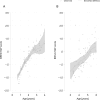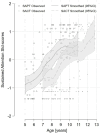Usability and psychometric properties of a battery of tools to assess intelligence, executive functioning, and sustained attention in Tanzanian children
- PMID: 39775577
- PMCID: PMC11684700
- DOI: 10.1371/journal.pone.0315058
Usability and psychometric properties of a battery of tools to assess intelligence, executive functioning, and sustained attention in Tanzanian children
Abstract
Background: Measuring neurocognitive functioning in children requires validated, age-appropriate instruments that are adapted to the local cultural and linguistic context. We sought to evaluate the usability and psychometric properties of five tools that assess general intelligence, executive functioning, and sustained attention among Tanzanian children.
Methods: We adapted five age-appropriate neurocognitive assessment batteries from previously published assessment materials to the Tanzanian context. We enrolled children 6 months to 12 years of age residing in the rural ward of Yombo, Pwani Region. Feasibility and acceptability of all instruments was assessed qualitatively and quantitatively, including measurement of refusal rates, ceiling or floor effects, and time requirements. We assessed internal consistency using Cronbach's alpha and convergent validity using standard correlation analysis. Score gradients across age were explored using polynomial regression analysis.
Findings: All five instruments required minimal adaptations to the Tanzanian context. Two-hundred sixty one children aged 6 months to 12 years completed the assessment. Refusal rates were consistently low (5.9% at the highest) and no ceiling or floor effects of measurements were observed. Feedback from assessors and caregivers indicated adequate test durations and generally high acceptability of instruments. All instruments showed good internal consistency with Cronbach alphas at least 0.84 for all tests. We found satisfactory convergent validity; all test scores strongly correlated with age.
Conclusion: The five instruments identified to assess general intelligence, executive functioning, and sustained attention constructs in Tanzanian children seem to work well in this setting.
Copyright: © 2024 Loss et al. This is an open access article distributed under the terms of the Creative Commons Attribution License, which permits unrestricted use, distribution, and reproduction in any medium, provided the original author and source are credited.
Conflict of interest statement
NO authors have competing interests.
Figures



References
-
- Rachel M, Fons VJR, Amina A, Perez-Garcia M, Manasi K. Assessing Neuropsychological Functions in Middle Childhood: a Narrative Review of Measures and Their Psychometric Properties Across Context. Journal of Pediatric Neuropsychology. 2021;7(3):113–38. doi: 10.1007/s40817-021-00096-9 WOS:000678617200003. - DOI
-
- Munoz-Chereau B, Ang L, Dockrell J, Outhwaite L, Heffernan C. Measuring early child development across low and middle-income countries: A systematic review. Journal of Early Childhood Research. 2021;19(4):443–70. doi: 10.1177/1476718x211020031 WOS:000664270300001. - DOI
-
- Boggs D, Milner KM, Chandna J, Black M, Cavallera V, Dua T, et al.. Rating early child development outcome measurement tools for routine health programme use. Arch Dis Child. 2019;104(Suppl 1):S22–S33. Epub 2019/03/20. doi: 10.1136/archdischild-2018-315431 ; PubMed Central PMCID: PMC6557219. - DOI - PMC - PubMed
-
- Bodeau-Livinec F, Davidson LL, Zoumenou R, Massougbodji A, Cot M, Boivin MJ. Neurocognitive testing in West African children 3–6 years of age: Challenges and implications for data analyses. Brain Res Bull. 2019;145:129–35. Epub 2018/04/10. doi: 10.1016/j.brainresbull.2018.04.001 ; PubMed Central PMCID: PMC6173996. - DOI - PMC - PubMed
-
- Berry JW, Breugelmans SM, Chasiotis A, Poortinga YH, Sam DL. Cross-Cultural Psychology: Research and Applications. 3 ed. Cambridge: Cambridge University Press; 2011.
MeSH terms
Grants and funding
LinkOut - more resources
Full Text Sources

